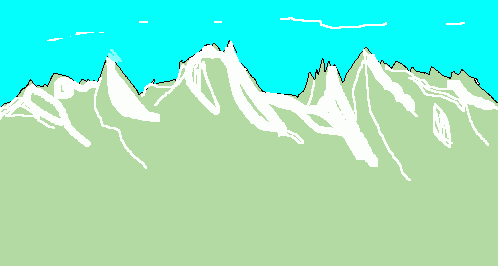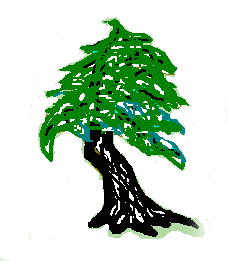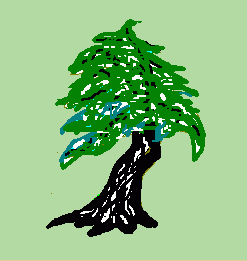
ROPE

The rope is a necessary component of the back packing experience. It is used to hang food off the ground and protect it from small animals, such as chipmunks, squirrels, raccoons or bears. Food should never be left in a tent. Small animals may chew through the walls to get to it. In bear country, food is best not taken into a tent at all, since odors may contaminate fabrics that may encourage bears to enter the tent. This would include anything that may give off an odor such as
soap, toothpaste, cigarettes or snacks.
Food protection when not in bear country is a simple procedure. The food bag needs only be hung a few feet off the ground, such that ground animals cannot reach it. Only a short rope is necessary in this instance.
It is thrown over a tree branch, and the food which is contained in a bag, is hoisted up and tied off. Any kind of carrier bag can be used to hang food. These can be clothes or tent bag, a sleeping bag carrier or a bag brought specifically for the purpose. If most of the food is kept in water proof containers, that are sealed and not vulnerable to moisture, the hanging bag need not be waterproof. More than one bag may be necessary depending upon the amount of food, each of which may be hung on the same rope. In all cases where food is hung, it might be best to keep excess rope left beyond the tie off point, off the ground. Animals will sometimes chew or cut it completely making it unusable.
Hanging food to protect it from bears is a different story. The food has to be properly hung. It should be
at least ten feet off the ground. It must be far
enough away from the trunk, so that if a bear climbs the tree it cannot be reached. I remember a guy some years ago that had hung his backpack, with food inside, about forty feet up a tree so high it was amazing. The
trouble was that it was only about two feet from the trunk. The next day a bear went up the tree, snipped the rope and ruined a three hundred dollar pack. The bag should be hung from a branch that a bear or cub cannot
climb out onto. Another rule is to never hang a backpack. Bears may know what they look like and might be more prone to go after a pack than a bag. The pack should be left on the ground with anything that a bear
might be interested in removed. They may cut open any sealed containers to see what they contain. All the pockets of the pack should be left unzipped. If a bear smells left over odors in a zipped pocket they may be temped to tear it open. Bears are not interested in people. What they want is food that is discovered by odor. One should avoid odor on the breath when sleeping at night and use odorless soap for washing and clothes. Things other than food should also be hung, such as toothpaste, cigarettes, soap, garbage or anything with an odor which might be of interest to a bear.
One of the most difficult things when back packing, can be the procedure of hanging the food to protect it from bears. One has to not only find a proper branch in which a rock can be thrown over, but it must be of the right height and thickness. The proper rock has to be found, elongated if possible, so that the rope can be tied around it and not come off with each attempted throw. The rock has to be light enough that one can easily throw it at least fifteen feet high, but not so light that it will not pull the rope over the branch by its own weight. Branches that are sticky with sap will sometimes make a rope difficult to slide over. This also can affect the difficulty in which a heavy bag of food is pulled up. If the rock is not heavy enough to pull the rope down, there is the possibility the it can get hung up when one tries pull it back down. Sometimes one has to throw the rock through an opening in a tangle of branches and leaves or needles. The rope can also
become tangled, hung up on obstructions on the ground
or be stood upon during the toss. The rock can also
come straight back at you.
There are three basic methods of hanging food. The first involves two ropes. One is tied off horizontally between two trees, twelve to fifteen feet above the ground. This may involve climbing both trees or it can be done by throwing both ends over the branches two different trees a short distance apart. The second rope is thrown over the horizontal line. The second method is to throw a rope over a tree branch and tie it off to another tree. This is the easiest method but it also assumes the bear does not connect the tie off line with the hanging bag. I have seen horse campers use a table top for all their food and simply haul the whole table, food and all, about thirty feet into the air, and tie it off 50 feet
away at a height of about 5 feet. A safer technique or the counter-balance method is quite a bit more difficult and requires a fairly high branch, or something more than ten feet. Two bags are used. The first bag is tied to one end of the rope. The bag is pulled up to the highest point possible or right to the limb. The
second bag is then tied as high as possible to the
pull rope while the first bag is held up. After having tied the second bag, the excess rope that is needed to pull the bag down is looped on top of the bag such that it can be hooked and pulled down with a stick. If the rope is left hanging down a bear can pull the pack down.
Then a long and strong stick is needed to push this second bag up to at least ten feet, while the first
bag comes down by counter-weight to an equivalent
level. The counter-balance method is the safest, but also the most work. It is best not to forget to hang items or hang prematurely, such that you have to do
this twice.
The rope can get gummed up with sap making it difficult to haul food up into the air. This can be remedied by putting the rope in boiling water for a time. Waxing
the rope also helps make it slide easier on a branch.
When a rope gets wet it has a tendency to tangle easier. The smaller the diameter of rope and the longer it is, the greater is this tendency. This can be prevented by keeping the rope in a zip lock bag when packing in
rain.







![]()
![]()